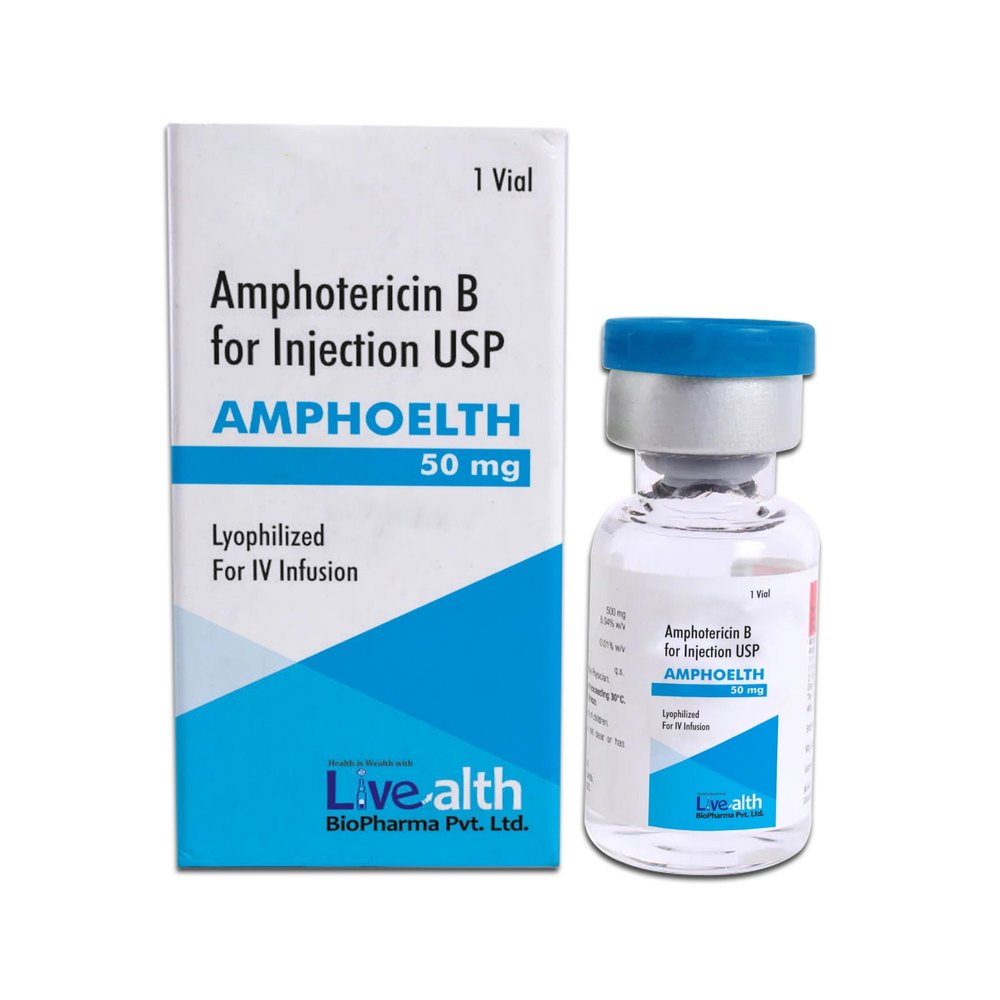Skip to content
🧪 Amphotericin B (Conventional) – Injection 50 mg
💊 Description:
- Amphotericin B (conventional) is a yellow to orange lyophilized powder that requires reconstitution before intravenous use.
- It is a polyene antifungal agent, primarily used in serious systemic fungal infections.
- The injection contains Amphotericin B with deoxycholate, making it the conventional form.
- After reconstitution, it forms a colloidal suspension, administered slowly via IV infusion.
- Each vial typically contains 50 mg of Amphotericin B, with buffers and stabilizers.
🌿 Nature:
- Polyene macrolide antifungal derived from Streptomyces nodosus.
- Exhibits fungicidal or fungistatic action, depending on the organism and drug concentration.
- Acts by binding to ergosterol in fungal cell membranes, forming pores that cause cell leakage and death.
- Poorly absorbed orally – hence always given parenterally for systemic action.
- It has a broad antifungal spectrum, especially against Candida, Aspergillus, Cryptococcus, and Histoplasma.
✅ Advantages:
- Gold standard for treating life-threatening fungal infections.
- Effective in immunocompromised patients, including those with HIV/AIDS, cancer, and transplant recipients.
- Does not significantly cause fungal resistance, unlike some newer agents.
- Can penetrate most tissues, including the central nervous system (CNS) in high doses.
- Widely studied and has decades of clinical experience and guidelines for use.
🩺 Uses:
- Systemic fungal infections such as candidiasis, aspergillosis, and cryptococcosis.
- Treatment of mucormycosis, especially in diabetic or post-COVID patients.
- Used in visceral leishmaniasis (kala-azar) in endemic areas.
- Indicated for fungal meningitis and disseminated mycoses.
- May be used empirically in neutropenic patients with persistent fevers.
❄️ Storage:
- Store the unreconstituted vial at 2–8°C (refrigerated); protect from light.
- After reconstitution, the solution must be used within 24 hours if stored refrigerated.
- Do not freeze the reconstituted solution.
- Handle under aseptic conditions during preparation to avoid contamination.
- Ensure slow IV infusion over 2–6 hours to minimize nephrotoxicity and infusion-related reactions.
Call Now Button

